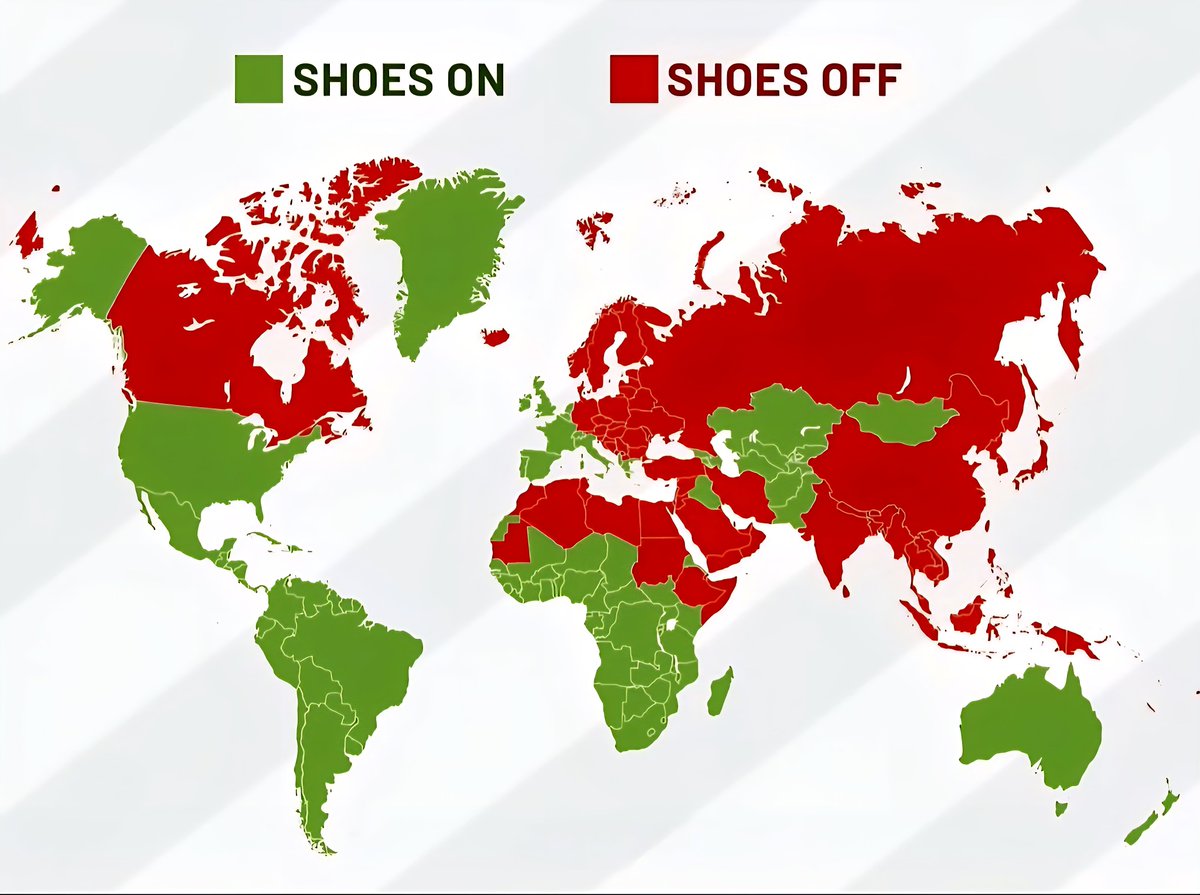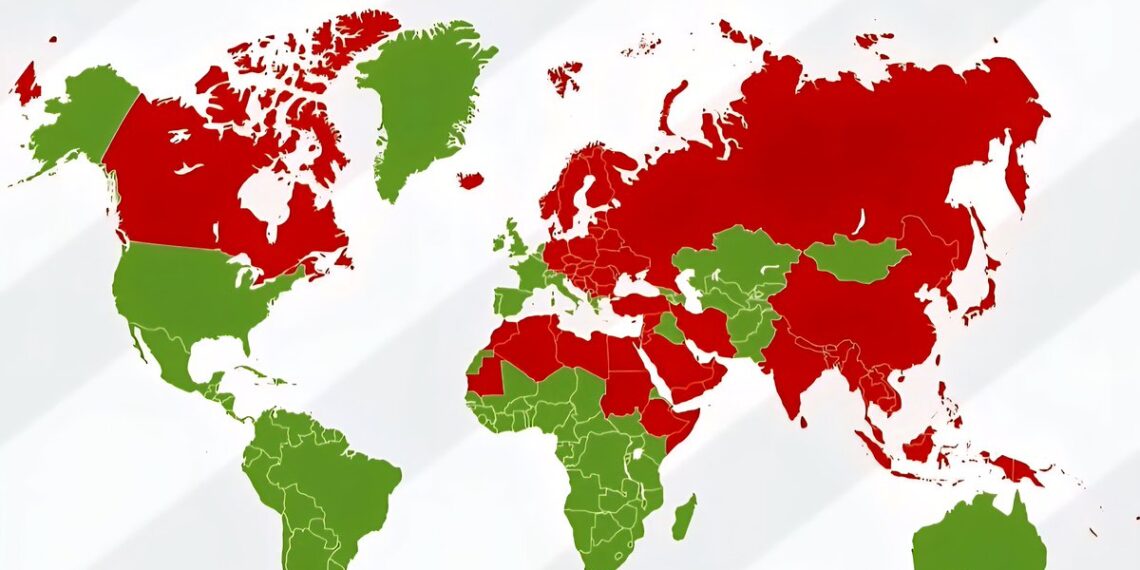Select Language:
The Global Trends: Shoes On vs Shoes Off in Homes in 2025

As households worldwide adapt to new lifestyles and cultural shifts, a fascinating trend has emerged regarding footwear habits inside homes. The recent global map showing the varying tendencies of keeping shoes on versus taking them off highlights distinct practices across different regions. Here’s an in-depth look at the current footwear customs around the world and what they reveal about local customs and health considerations in 2025.
North America: The Shift Toward Shoes Off Practices
In the United States and Canada, there’s been a notable increase in households adopting the “shoes off” policy. Driven by heightened health awareness and increased sanitation consciousness, many families now prefer to remove shoes at the door. This shift not only helps keep homes cleaner but also aligns with growing concerns about germs and bacteria that can be tracked indoors.
Major cities like New York, Los Angeles, and Toronto display a strong tendency toward shoes off homes, particularly in urban apartments and suburban residences with children. Many homeowners and tenants see the practice as part of a broader effort to maintain a cleaner, healthier living environment.
Asia: The Cultural Roots of Shoes Off
In several Asian countries, including Japan, South Korea, and Taiwan, removing shoes upon entering a home remains a deeply ingrained cultural practice. Traditionally, households have designated specific slippers for indoor use, reinforcing cleanliness and respect for the living space.
However, recent trends indicate a gradual change in some urban areas. Due to Western influence and modern lifestyle shifts, some families now keep shoes on inside during casual or quick visits. Still, in most households, particularly those with older generations, the custom persists steadfastly.
Europe: A Mixed Bag of Customs
European nations exhibit a diversified approach toward shoes indoors. Countries like Sweden, Norway, and Germany generally lean towards shoes-off policies, motivated by sanitation and comfort. In Scandinavian households, it is customary to remove shoes to protect flooring and promote coziness.
Conversely, Southern European countries like Italy and Spain tend to have more relaxed attitudes toward indoor shoes. Many homes in these regions allow shoes on, especially during social visits and casual everyday living. The variation illustrates how cultural history influences current practices.
Australia and New Zealand: Changing Norms
In Australia and New Zealand, the trend is leaning decisively toward shoes off, especially in metropolitan and suburban households. The health benefits of cleanliness, particularly in homes with infants or elderly residents, are significant drivers.
Additionally, the rise of eco-conscious living and maintaining polished flooring has contributed to this shift. Many homes now implement clear signage at entry points encouraging guests to remove footwear, aligning with overall hygiene concerns.
Middle East and Africa: Preservation of Traditional Habits
The Middle East and parts of Africa show diverse practices influenced heavily by cultural and religious traditions. In many Middle Eastern households, particularly in countries like Saudi Arabia and the UAE, removing shoes is customary, often linked to religious practices and hospitality customs.
In parts of Africa, the approach varies from region to region. Traditional communities generally uphold shoes-off norms, while urbanized cities may adopt more casual practices, sometimes allowing shoes indoors during visits or social gatherings.
Latin America: A Favor for Shoes On
Most Latin American countries, such as Mexico, Brazil, and Argentina, primarily maintain shoes-on policies inside homes. This trend can be attributed to cultural norms emphasizing hospitality and social visits, where guests often wear shoes without issue.
However, urban households emphasizing cleanliness and modern living aspirations increasingly encourage guests and family members to keep shoes off, especially in homes with children or recent renovations.
Health and Hygiene Trends Impacting Indoor Shoe Practices
The year 2025 has seen an accelerating awareness regarding health protocols in the wake of global health crises. This heightened consciousness has significantly influenced people’s decisions about shoes inside homes. Rising concerns about bacteria, germs, and floor cleanliness have led to widespread adoption of the shoes-off policy in many parts of the world.
Manufacturers of indoor slippers have also experienced a boom, providing styles that blend comfort, hygiene, and aesthetic appeal. Many households now incorporate designated footwear to promote cleanliness without sacrificing comfort or style.
The Future of Indoor Footwear Customs
As urbanization continues and health standards evolve, it’s expected that more households globally will lean toward removing shoes indoors. While cultural traditions will undoubtedly persist, the emphasis on hygiene and cleanliness could lead to broader acceptance of shoes-off policies.
Emerging smart home technologies, such as automated shoe disinfecting stations at entryways, may further influence these habits by making the process seamless and hygienic.
In essence, the world’s footwear practice inside homes is a dynamic tapestry—shaped by tradition, health concerns, and lifestyle shifts. The map of shoes on versus shoes off in homes in 2025 vividly illustrates this evolving global landscape.
Note: The above information is based on current data and trends as of 2025 and aims to provide a comprehensive overview of footwear customs worldwide.






